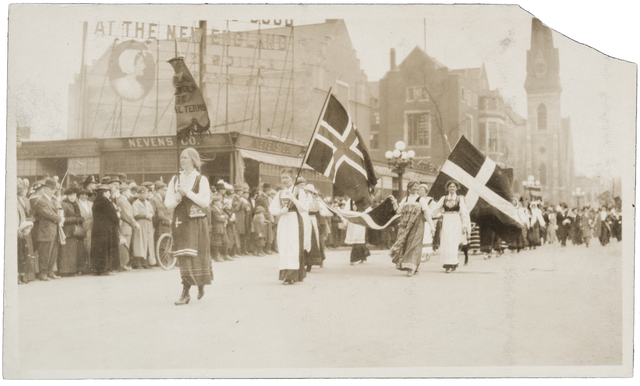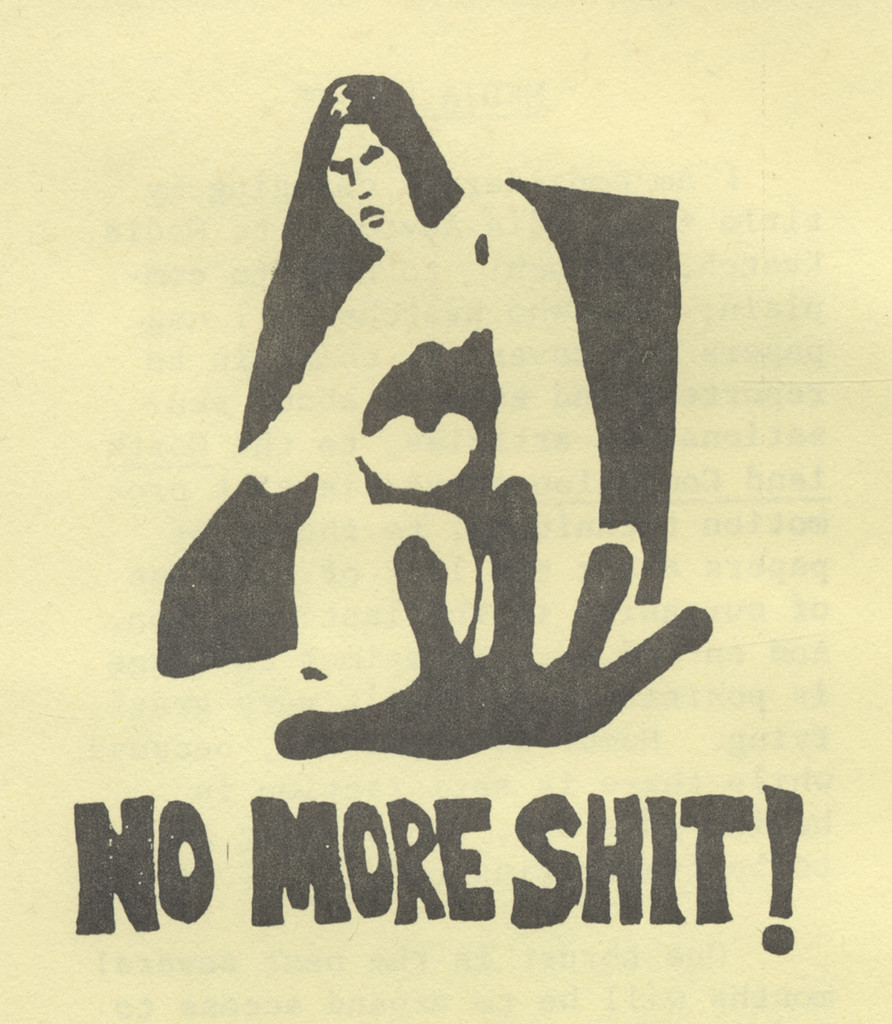Today’s blogger is Anna Romskog, a junior history major at Augsburg College and an intern with the Historyapolis Project.
Exactly 100 years ago today, “Minneapolis learned by practical demonstration that those who ask the ballot for women are distinctly not a bevy of hopeless spinsters, unhappily married women and persons who have nothing else to do,” according to the Minneapolis Morning Tribune. Members of the Scandinavian Woman Suffrage Association–shown here– joined 2,000 other suffrage advocates in a procession through downtown, where they braved a gauntlet of jeering men.
The demonstration in the heart of the city’s fashionable shopping district–which was organized by a coalition of organizations demanding political equality for women –took its inspiration from the militancy of British suffragists, who had embraced confrontational direct action tactics in an effort to force the question of female enfranchisement. Marchers’ public show of force reflected a fresh spirit of impatience among women activists in Minnesota, who had been demanding the vote since the since the founding of the city in the 1870s. “By the time they had passed,” the Tribune reported, “the onlookers were impressed with the fact that there is in Minneapolis a considerable army of women sufficiently determined to have the ballot to march through the streets to get it.”
Flag-wielding demonstrators went down Second Avenue to Fourth Street and back down Nicollet. The silent marchers were “not what the multitude of watchers had expected,” according to newspaper coverage. “They saw women of every walk of life, young women, old women, middle-aged women, working women, rich women, women beautiful, women otherwise.” Immigrant groups–like the one pictured here–were prominent in the demonstration.
The reporter dedicated the most copy to the physical attractiveness of marchers, who defied contemporary stereotypes about women activists. “The chap who had formed the idea that hopeless spinsters were in the majority in suffrage ranks, that girls with plenty of suitors were absent from their roster was terribly jolted,” the anonymous writer declared.
One of the younger marchers–Helen Jones, who was a senior at Minneapolis Central High school and president of the Junior Mobile Suffrage Squad later remembered:
We were told to keep our heads up, eyes in front of us, and to walk in dignity and silence…I never felt so serious in my life and didn’t look at the crowd at all…Some horrid men threw money on our flag and did and said other rather insulting things. It really seemed absurd that the red-faced, [coarse][sic], sneering men whom we passed could vote, and the noble, fine women in the parade could not.
American women gained full voting privileges six years after this parade, with the ratification of the Nineteenth amendment.
Material for this post was taken from “Paraders Place Equal Suffrage on a New Plane,” from the Minneapolis Tribune, May 3, 1914 and Barbara Stuhler, Gentle Warriors. The image of the Scandinavian Woman Suffrage Association is from the Minnesota Historical Society.

